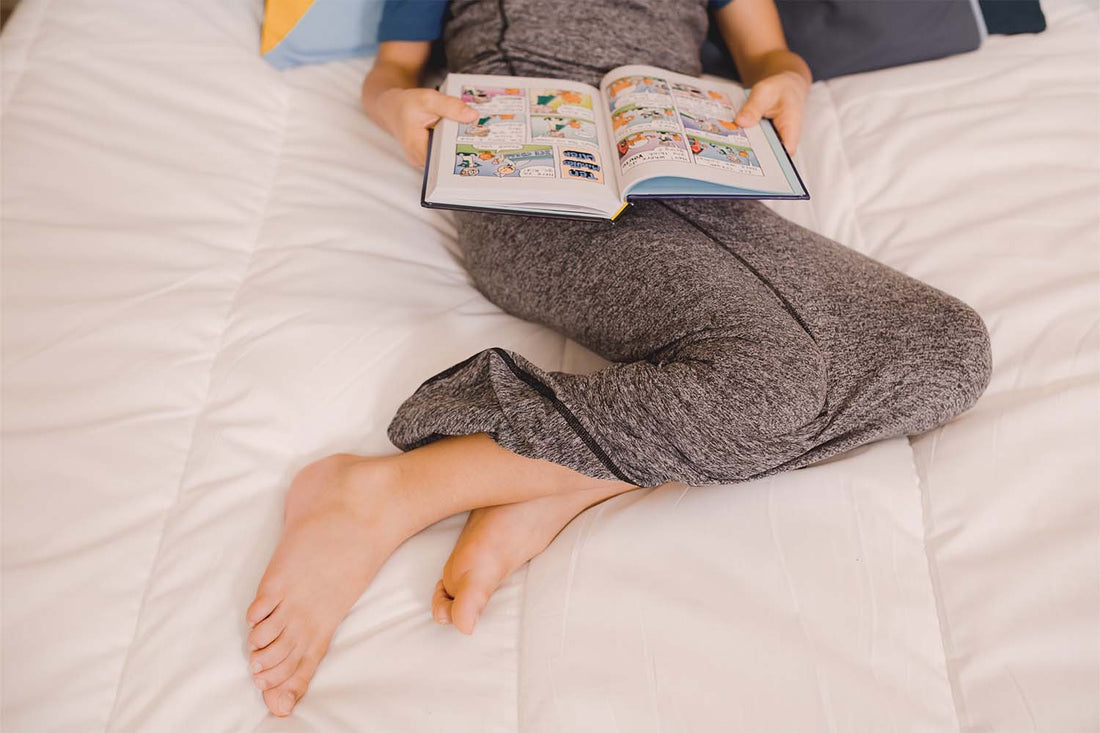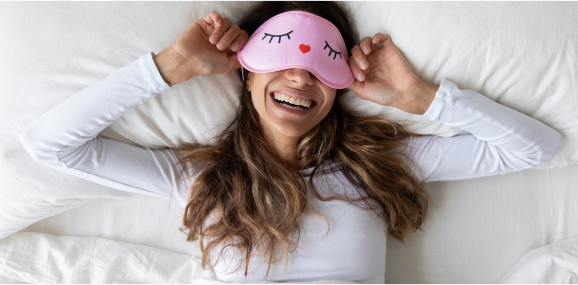Getting a good night’s rest is one of the most important things we can do for our health. Restful sleep helps our body recover, rejuvenate, and rebuild. Sleep is not optional.
Unfortunately, restful sleep is not always guaranteed. In fact, getting quality sleep is extremely challenging for some people. This can be the reality for many children with autism.
Many children with autism not only have issues going to sleep but also issues staying asleep. The lack of sleep can cause many daytime problems and compound the challenges that are already associated with being a child on the spectrum.
But why do these sleep issues occur? Are there ways to help ease the burden at bedtime? Thankfully, there is hope — let’s take a closer look.
A Closer Look at Autism
Autism spectrum disorder (ASD) affects millions of people around the world, many of which are children. Autism is a complex, developmental disability that generally appears during childhood years.
In fact, according to CDC statistics, autism affects about 1 in 44 children in the United States. Also, autism is more common among boys than among girls — 1 in 27 among boys compared to 1 in 116 among girls.
Research is still ongoing as to the exact cause of ASD, but it is believed that genetics could play a role.
Autism Looks Different For Everyone
This disorder can affect every aspect of a person’s life, causing issues with social skills, behavior, sensory processing disorders, communication, and more. In fact, according to statistics at Autism Speaks, an estimated 40 percent of people with autism are considered nonverbal.
It is referred to as a spectrum because it can affect everyone differently, in severity and degree. However, anxiety issues are very common, especially among children and teens on the autism spectrum — affecting an estimated 11 to 40 percent.
According to the statistics above, one or more chronic sleep problems affect more than half of all children with autism, significantly impacting their quality of life because of the challenges sleep deprivation can cause.
Some of the most common sleep disturbances include:
- Difficulty falling asleep (sleep onset delay)
- Poor sleep quality and restlessness, leading to poor sleep efficiency
- Sleep fragmentation, frequent wakening, or short sleep duration
- Inconsistent sleep routines
Links Between Autism and Sleep Issues
Sleep issues and disorders are extremely common among those with autism, especially children. Among children, these sleep issues can negatively impact social interaction, academic achievement, overall health, and day-to-day life in general — not to mention the added stress on parents and caretakers.
Issues with sleep can present in many different ways, but for children with autism, there is a connection between the following characteristics and a lack of sleep:
- An increase in daytime behavioral problems
- Irritability and daytime sleepiness
- Poor cognitive performance (e.g. learning, academics, etc.)
- Symptoms of attention deficit hyperactivity disorder and aggression
- Mood disorders and anxiety
According to various sleep studies of children with autism, research has shown that most of the abnormalities and disruptions in sleep are related to the rapid eye movement (REM) stages of sleep.
Furthermore, research found these disruptions included decreased sleep quantity, time in bed, and total sleep time. As far as sleep stages are concerned, research also showed issues with REM sleep latency and an increased proportion of stage 1 sleep.
Disruptions in the Sleep Cycle
Constant disruptions in the sleep cycle can be disastrous when it comes to sleep health and overall wellness. There is a lot going on in the body when we lay our heads down and close our eyes at night.
Some of the biological processes that occur during sleep include:
- Cellular restoration. Cells are repaired, energy is stored, and hormones are regulated.
- Memory consolidation. New information is being stored and memories are being consolidated by the brain while we sleep.
- Immune strengthening. Sleep allows our immune system to strengthen its defenses, producing important chemical messengers needed for immune defense.
Aside from all the biological processes, sleep is also crucial for our overall mood and mental health. This is even more important for those with autism, many of whom already have issues regulating mood, emotions, and behavior.
The Four Stages of Sleep
The findings in the study above suggests that the sleep issues for children with autism is typically a result of some sort of abnormality or disruption in one or more of the stages of the sleep cycle and REM sleep.
Technically, there are two types of sleep: Non-rapid eye movement (NREM) and rapid eye movement (REM). Your body shifts from these two types multiple times a night.
During the night, a person progresses through four stages of sleep — this is known as the sleep cycle. On average, a person will progress through these four stages about four to six times a night.
Stage 1 of the sleep cycle
NREM sleep kicks off the first stage of sleep. During this stage, the body has drifted from wakefulness to sleep. Biological processes like heart rate, breathing, eye movement are slowing down more and more. Muscles relax more as brain activity also slows. An increased time spent at this stage can disrupt overall sleep quality.
Stage 2 of the sleep cycle
This stage is normally the longest out of the four. Still NREM sleep, this stage is marked by a continued slowing of the biological processes mentioned above (e.g. heart rate, eye movement, etc.) but also a slight decrease in core body temperature.
Stage 3 of the sleep cycle
The final NREM stage is referred to as slow-wave, or deep sleep. It is at this stage where the most restorative sleep occurs. The biological processes are at their lowest point, and eye movement has virtually ceased altogether. This stage typically lasts around 20 to 40 minutes.
Stage 4 of the sleep cycle
The one and only REM stage typically occurs roughly 90 minutes after falling asleep. This stage is marked by an increase in heart rate, breathing, eye movement, and more. It is during REM sleep that dreaming occurs. Also, memories are consolidated by the brain during this final stage.
Issues With REM Sleep Latency
Sleep latency is merely a technical term that refers to the length of time it takes to actually fall asleep. Normal sleep latency is around 10 to 20 minutes. Poor bedtime habits can obviously affect this (e.g. coffee or high-intensity exercise before bed).
Sleep latency can provide insight into overall sleep quality. The sleep studies of children with autism mentioned issues of REM sleep latency and disruptions, causing sleep fragmentation, nocturnal awakenings, and more.
Other Potential Causes of Sleep Issues
Oftentimes, the exact causes of sleep issues among children with autism are unknown, but researchers do have many theories.
Difficulty picking up priming cues
Some believe sleep issues among children with autism may be due to failures to pick up on social cues.
For example, though sleep patterns are regulated by environmental cues, social cues still play a part in getting ready for bed. These typically take the form of bedtime routines — putting on pajamas, brushing teeth, and other activities that form healthy sleep habits.
These cues and routines help signal to the brain that bedtime (and sleep) are imminent. However, children with autism may not be able to process these cues like other children.
Sensory issues
Sensory processing issues don’t just affect those with autism, but issues like this are more prevalent among those on the autism spectrum.
In short, sensory processing conditions are marked by the brain’s difficulty in perceiving and responding to sensory information and inputs: touch, smell, taste, sight, and sound.
Many children with autism are hypersensitive and hyper-responsive when it comes to sensory inputs. For example, it may be extra difficult for them to block out distracting noises during the night. It may be the feel of the sheets or clothing that is keeping them awake. No matter the cause, sensory issues can contribute to sleep disruptions.
Lack of melatonin
Other studies have looked at the relationship between sleep architecture and melatonin production in children with autism. Sleep architecture simply refers to the basic structure and organization of normal sleep (i.e. the stages of sleep, sleep-wake cycle, etc.).
These studies suggest that children with autism may produce less melatonin. Melatonin is known as the sleep hormone.
The exact reasons for this semi-deficiency are still being investigated, though it could be due to disturbances in the sleep-wake cycle.
Disruptions in the sleep-wake cycle
The sleep-wake cycle is run by the body’s biological clocks, known as circadian rhythms. They help control and regulate biological processes that take place over a 24-hour period — like wakefulness and sleep, hormone regulation, and metabolism.
The sleep-wake cycle is controlled by environmental cues, namely daylight. During the day when we are exposed to light, our brain is sent messages to stop melatonin production, inducing wakefulness and alertness. At night, this is reversed. As the light fades, melatonin production begins again, inducing sleepiness.
Researchers believe it could be some sort of disruption in the sleep-wake cycle that causes lower levels of melatonin to be produced in some children with autism, resulting in sleep issues.
Poor bedtime habits or other external factors
Poor sleep hygiene and bad bedtime habits might also be the cause of sleep issues.
Poor habits might include:
- Irregular sleep patterns, schedules, and routines
- Poor sleeping environment (too hot, too noisy, too bright).
- Electronic devices use before bed (blue light from electronics can disrupt sleep)
- General bedtime anxieties
- Night terrors or nightmares
- Illnesses or other health conditions
- Bedwetting
- Consuming caffeine
- Certain medications
How To Help Those with Autism Sleep Better
Sleep issues among children with autism could have multiple causes, so there may not be a one-size-fits-all approach to better sleep.
However, making small changes to lifestyles could help promote better sleep. For example, what you do during the day affects how well you sleep at night.
Here are a few daytime behavior suggestions to help your child sleep.
Encourage physical activity during daytime hours — outside is even better.
Physical activity and play can help burn energy. Exposure to daylight will help promote the healthy function of the sleep-wake cycle.
Forgo the daytime naps if the children are over five years of age.
Frequent and long daytime naps can disrupt normal sleep patterns during the night. In order to promote better sleep, establishing good sleep hygiene and behavioral strategies is also key.
Start with a bedtime routine.
The routine should begin at least 20 minutes before bedtime. It can include the classics — brushing teeth, pajamas, etc. — but can also involve relaxing activities like reading aloud, calming music, and more. The routine needs to signal that it is time to wind down. It should also be predictable in order to regulate children’s sleep.
No electronics before bed.
Every parent knows this is hard. But electronics like television, phones, tablets, computers, and video games emit blue light; they can disrupt sleep patterns later in the night. Blue light can simulate daylight, essentially telling the body to produce melatonin. The result: Restlessness.
Create a calming sleep environment.
The sleeping environment is very important. It should be made to promote relaxation at bedtime and combat bedtime resistance. A dark, quiet, cool room is typically best, especially among those with sensory issues.
Try the Sleep Pod If Restlessness Is an Issue
Many children with autism typically experience sleep issues due to feelings of restlessness and anxiety. They simply can’t get relaxed enough to fall asleep — or stay asleep.
To address these issues, occupational therapists have turned to practices like Deep Touch Pressure Stimulation to help induce relaxation and calm worry in children with autism.
Using some of the same therapeutic principles and techniques behind Deep
Touch Pressure Stimulation, the Sleep Pod Move for kids uses gentle compression to help promote relaxation and relieve feelings of restlessness at bedtime.
The Sleep Pod Move is made from an ultra-breathable, specialized 4-way stretch material. Its cocoon-like shape is also made for mobility, allowing total feet freedom while maintaining gentle pressure. It was designed with better sleep in mind.
Conclusion
Autism spectrum disorder affects millions of people, in different ways and in different severities. However, issues with sleep are one thing with immense prevalence among children with autism.
The reasons for this vary and the exact causes are unknown. Some research suggests these sleep issues may have something to do with disruptions in the sleep cycle while others are simply the result of poor bedtime habits and anxiety.
Thankfully, there are some ways to help children with autism sleep better. It starts with daytime activities and ends with good sleep hygiene and bedtime habits. But remember, consistency and predictability are key to comfortably establishing new routines.
Sources:
Data and Statistics on Autism Spectrum Disorder | CDC
Autism Statistics and Facts | Autism Speaks
Autism and sleep disorders | NIH
Relation of melatonin to sleep architecture in children with autism | NIH


































500,000+ happy customers